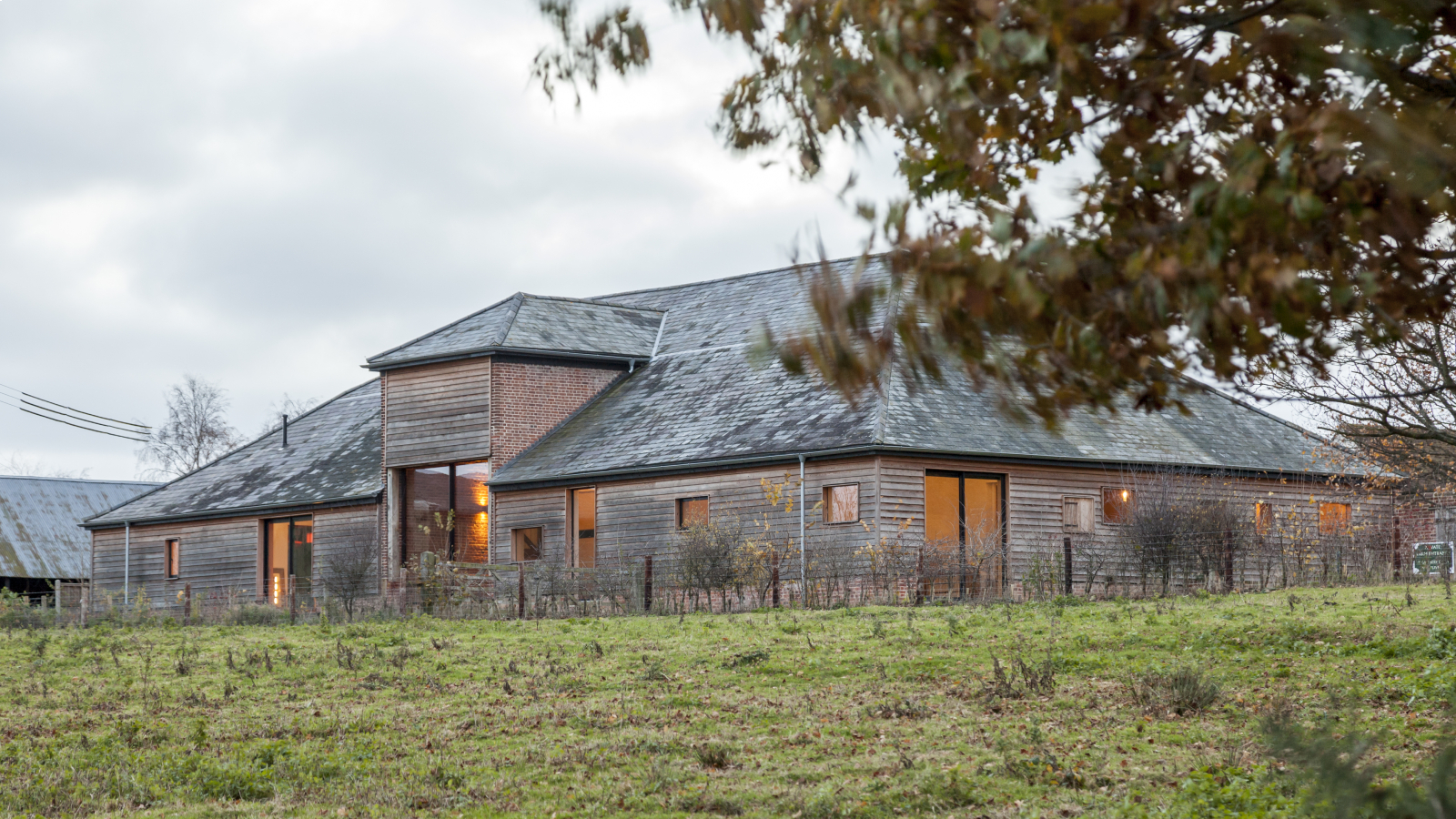‘I’ve halved my energy bills’ – step inside this riverside eco home built with local materials
This spectacular and elegant waterside home is a triumph of design on a complex plot
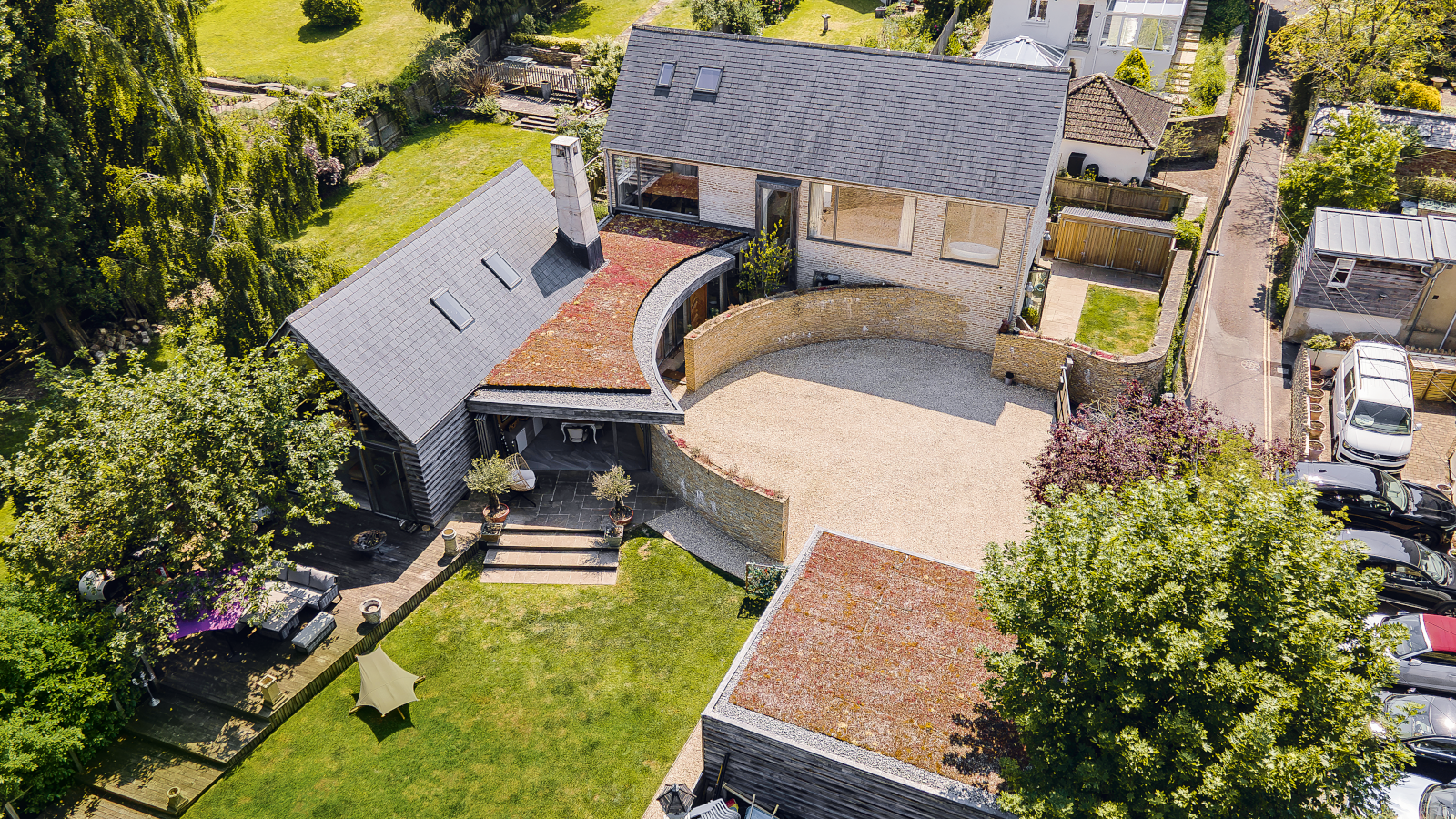
Chris Dann has an enduring passion for property and design. "I've always had a feeling for homes and space," he says. And that instinct came into play when he acquired a riverside plot in the heart of a Wiltshire town – land that he bought from his mother.
Despite the site being in the centre of a busy town and home to nothing more inspiring than old garages and informal parking, Chris's overtures to the local planning department over several years came to nothing.
The number of obstacles were significant; the site is in a conservation area surrounded by listed properties. Chris realised that something substantial would need to change to tip the scales on planning permission.
Project details
- Location Wiltshire
- Construction Timber frame with traditional masonry sections
- Size 287 sq m
- Build cost £780,000
- Build time 14 months
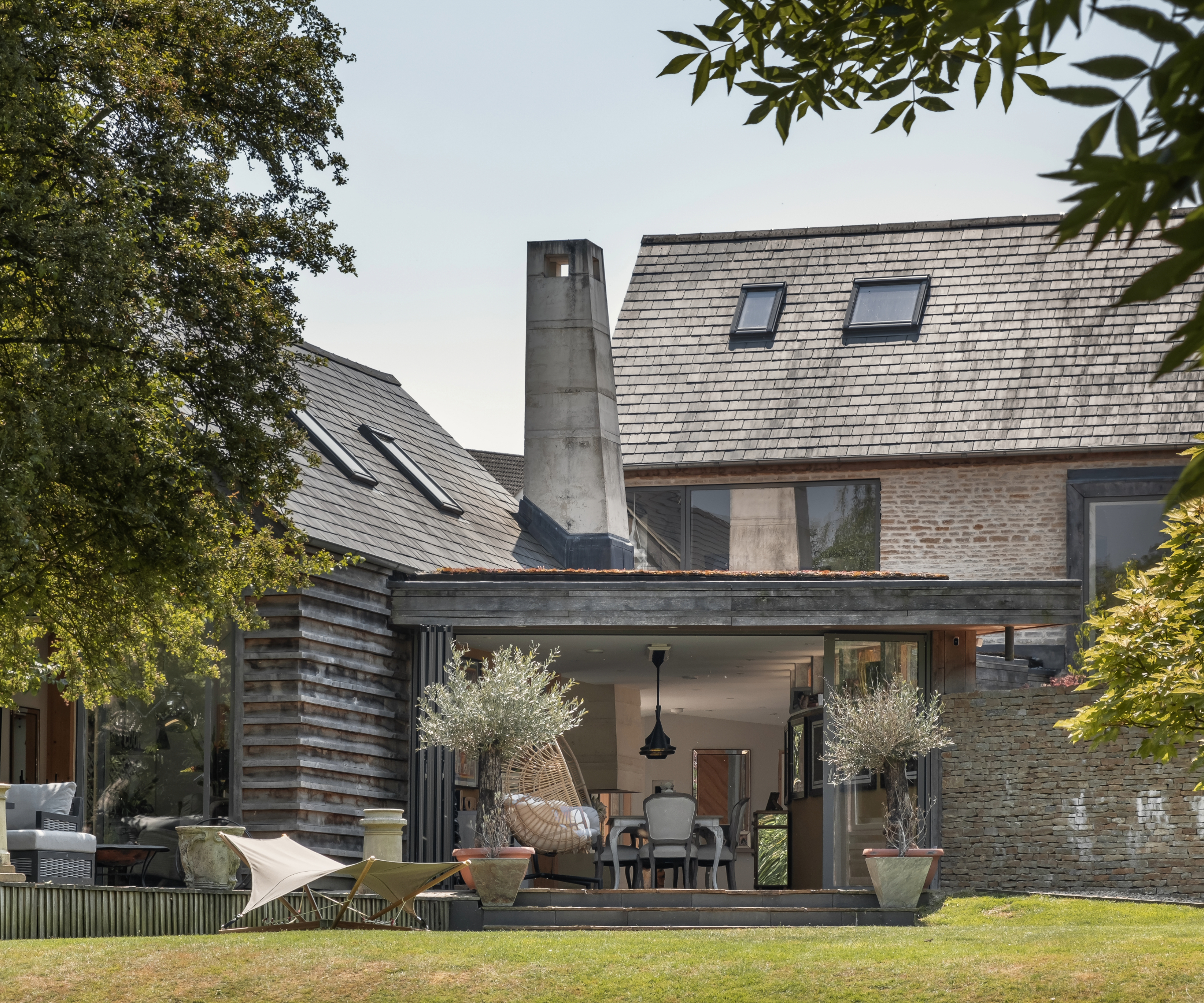
'I like the way the glazed doors open up into the garden'
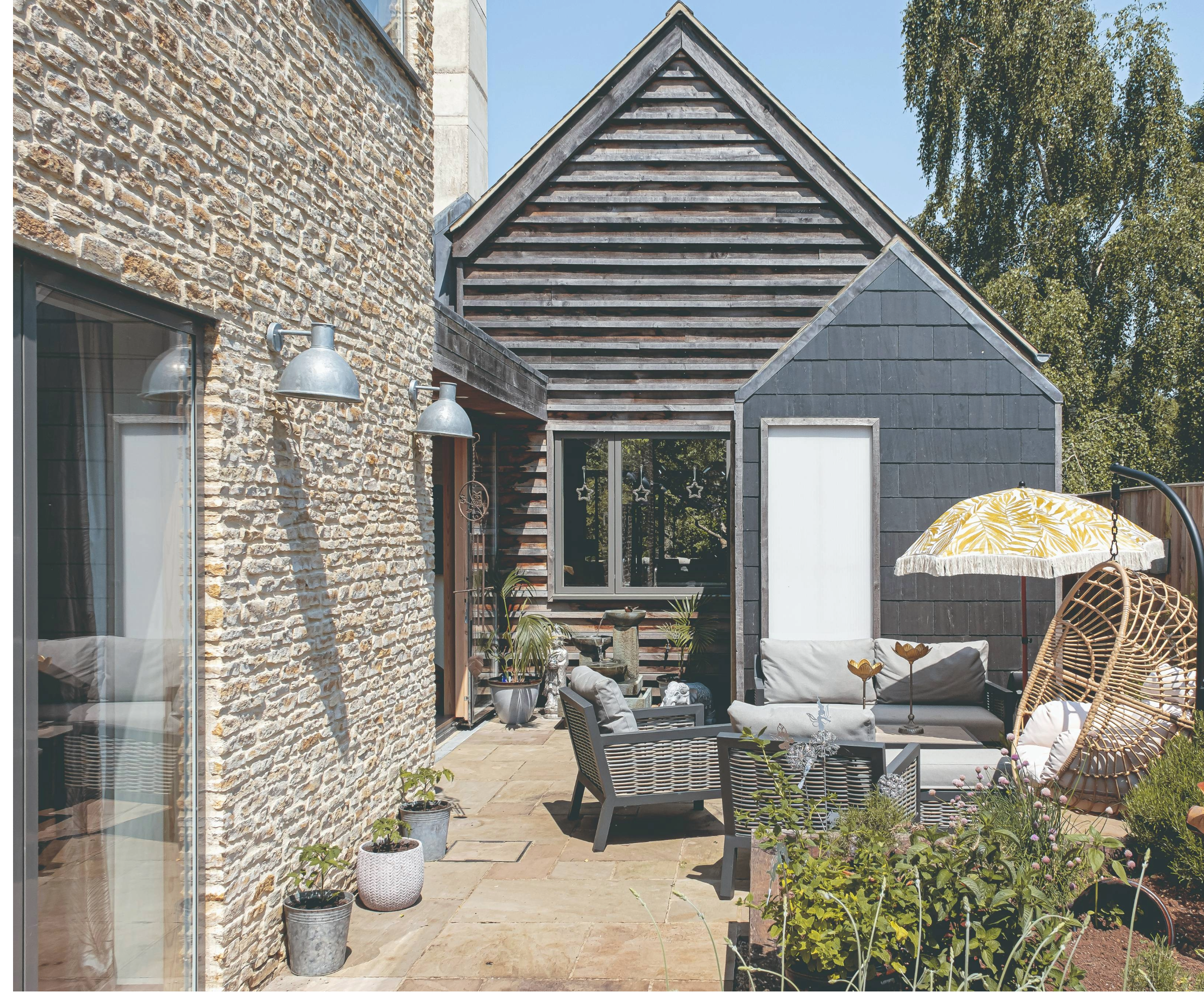
The garden patio is accessible from the dining area
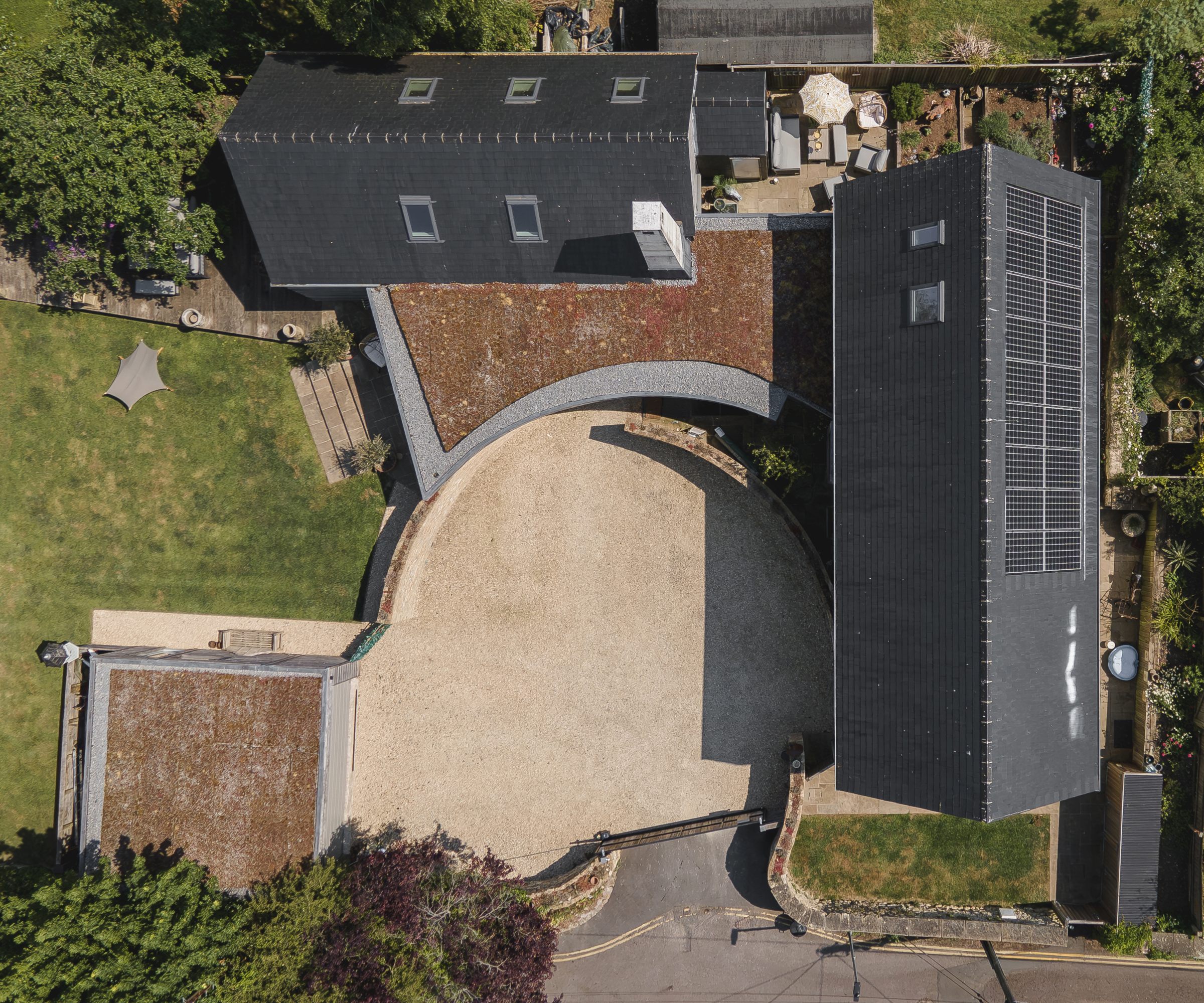
The property uses solar photovoltaic panels to provide electricity
Planning success
That change came when Chris sold his home in Berkshire to escape the disruption of the government's HS2 high-speed railway project and moved in to a bungalow situated at the top of the lane leading to the site.
Having already bought the site from his mother he instructed local architect Rob Elkins of Artel 31 to design a property that would successfully achieve planning permission. Rob's response was a contemporary, yet sympathetic house design – one that gave a nod to the style of the neighbouring homes and which used locally sourced materials.
The application for this sophisticated addition to the surrounding conservation area gained permission on first application, thanks to the design's architectural merit and sensitivity to its surroundings.
"The planning department was hugely supportive of the design and it allowed us to push beyond the development boundary towards the river," says Rob.
Bring your dream home to life with expert advice, how to guides and design inspiration. Sign up for our newsletter and get two free tickets to a Homebuilding & Renovating Show near you.
From Chris's point of view, he needed a home with living spaces on one level and wide doors that would easily accommodate his mother's wheelchair whenever she visited. "Also, I had left all my antiques behind, and I was getting into modern," Chris explains. "I wanted some nice big spaces."
And big spaces certainly feature in Rob's design. The social and private areas of Chris's home are separate, yet are linked by an impressive sweeping central entrance, which has been roofed with turf and pierced with a contemporary chimney.
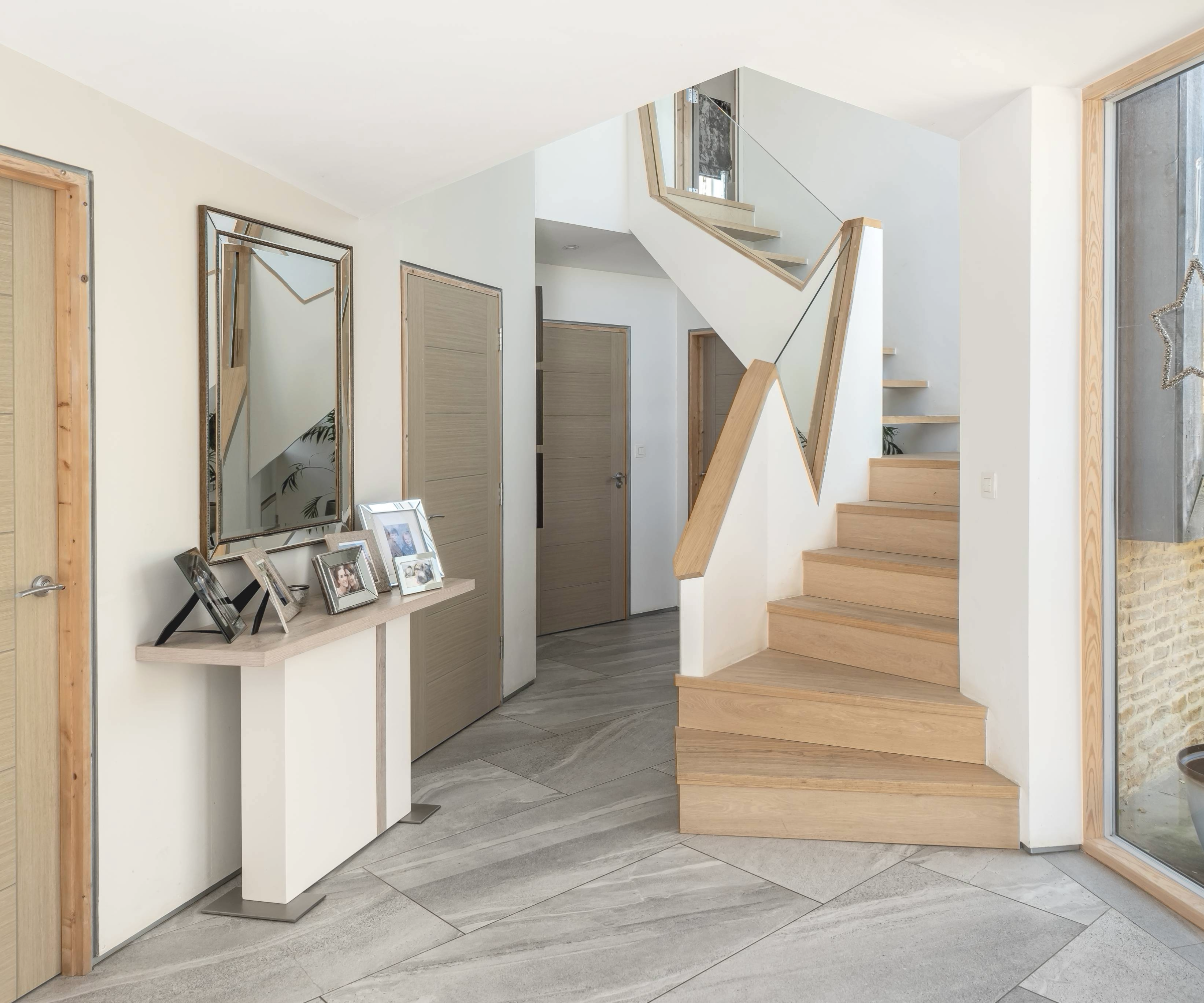
On the river side of the house, the social spaces are divided into a vaulted kitchen and living area with a glazed gable wall overlooking the garden.
On the other side of the entrance, the home has a two-storey structure and features the office, bedrooms and bathrooms with a beautiful view from the master bedroom across the river to the parkland beyond.
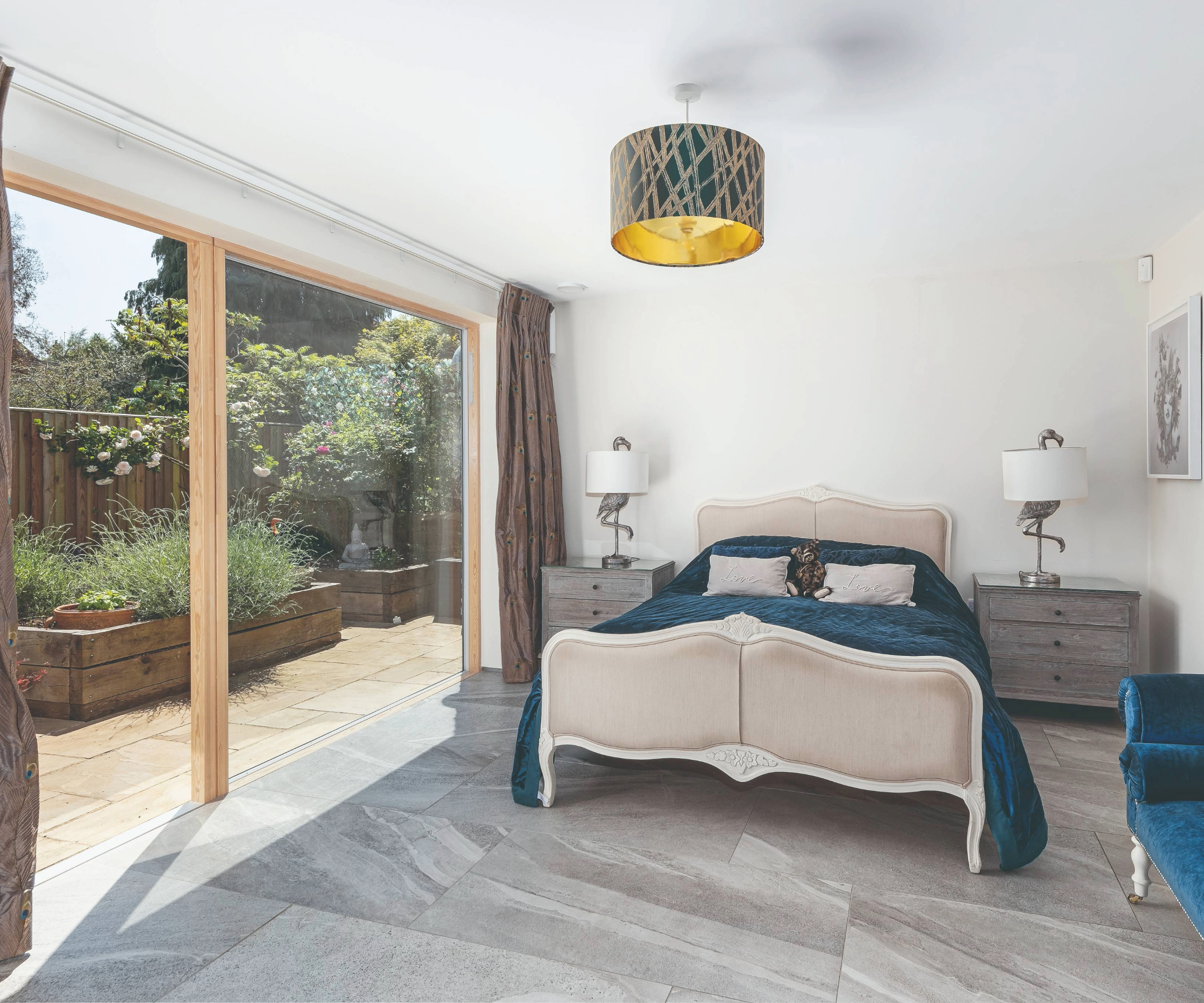
The ground floor also features an accessible guest room with a private patio garden

The kitchen design was included in the plans for the house and features solid ash and Silestone worktops
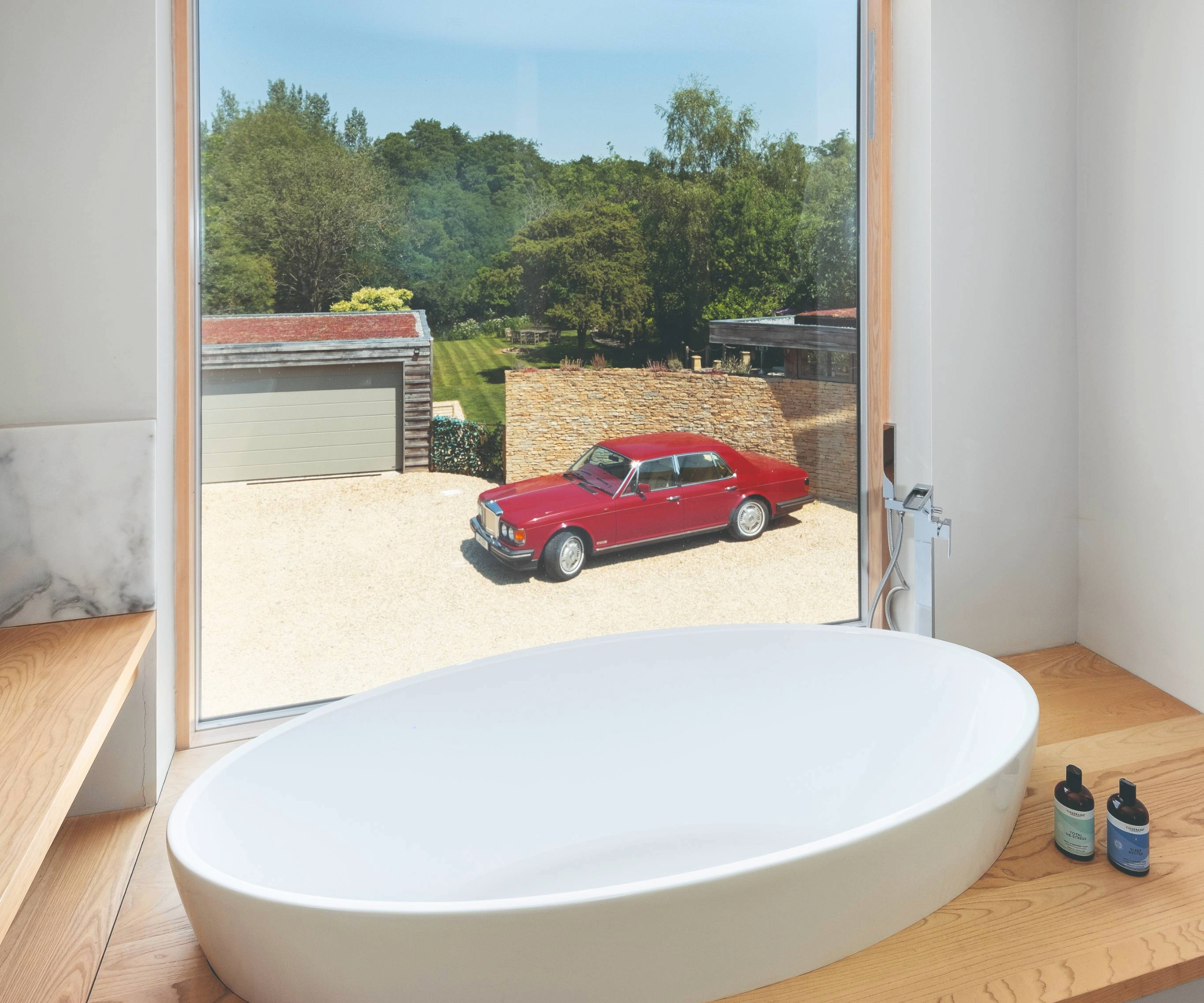
The bathroom overlooks the driveway and garden
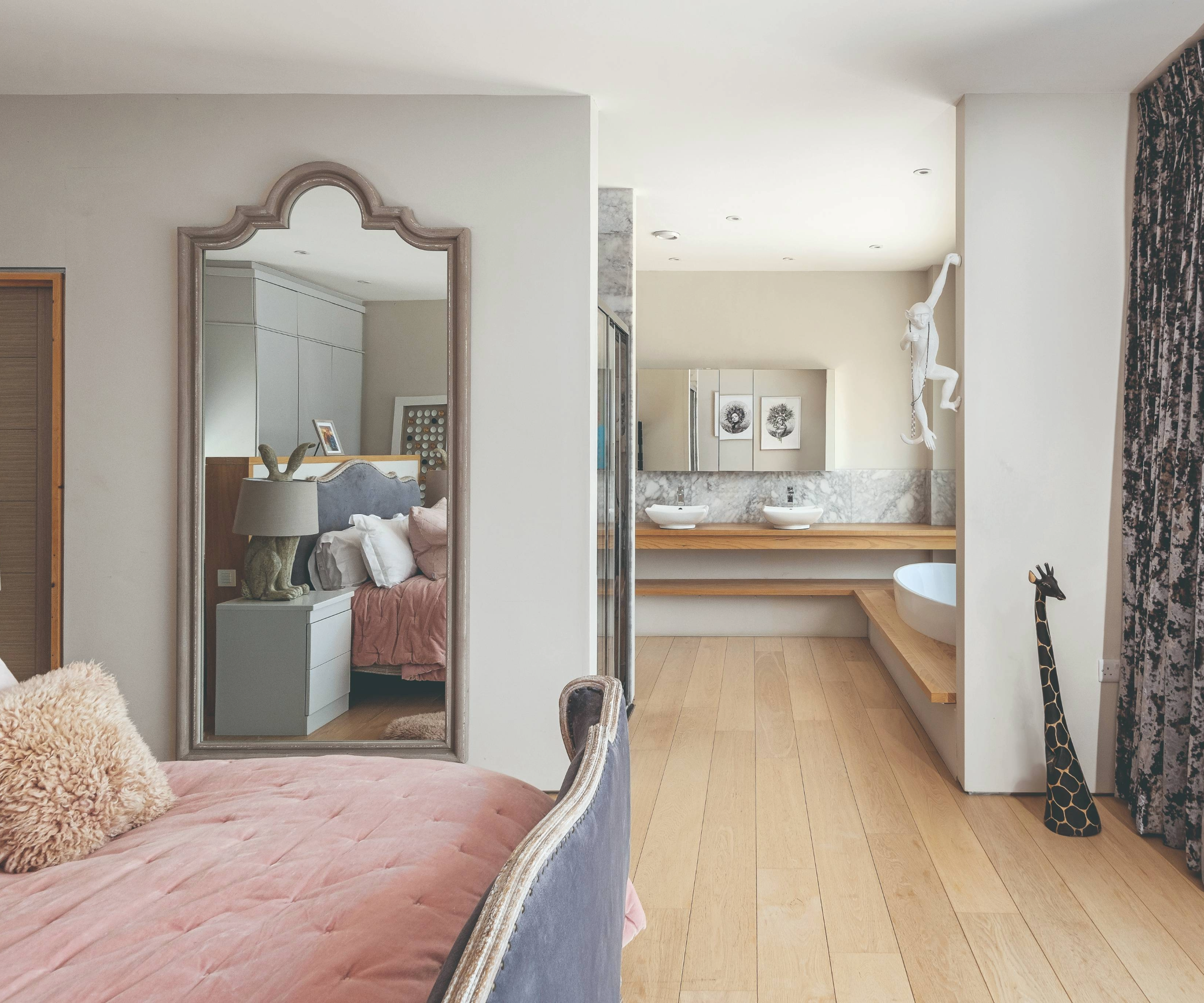
The main bedroom suite has large windows, making the most of views across the garden and river to the parkland beyond
Thinking locally
Chris's home was quite a complex build, incorporating timber framing in the living areas as well as tieless glulam beams in the vaulted living room. There are areas of structural steel, too, most notably in the glazed gable wall, thanks to the size and weight of the glass panes.
The bedroom section is built mainly from traditional masonry, clad in local stone. Material choices were important in the build, with the emphasis on local stone and timber, selected for longevity without the need for pesticides or fungicides.
On such a sensitive site, it's not surprising that ecologically friendly tech is a feature, and with this in mind, Chris was able to exploit his home's riverside location.
"We originally planned a ground source heat pump, but the engineer suggested using the water instead, because it's better and cheaper," says Chris. This required an application to the Environment Agency (EA), which was granted without any issues.
Chris also installed solar photovoltaic panels to provide electricity that, he believes, "have halved my energy bill to £6 a day. When I eventually get a battery, that will save me more in the long run, too."
The property is highly insulated and also benefits from a mechanical ventilation heat recovery system. Outside, the green roof on the central section of the home looks good most of the time here in the rainy UK, although Chris still wishes he had invested in an irrigation system, as during periods of extreme heat it suffers. "It dies, then it comes back," he says.
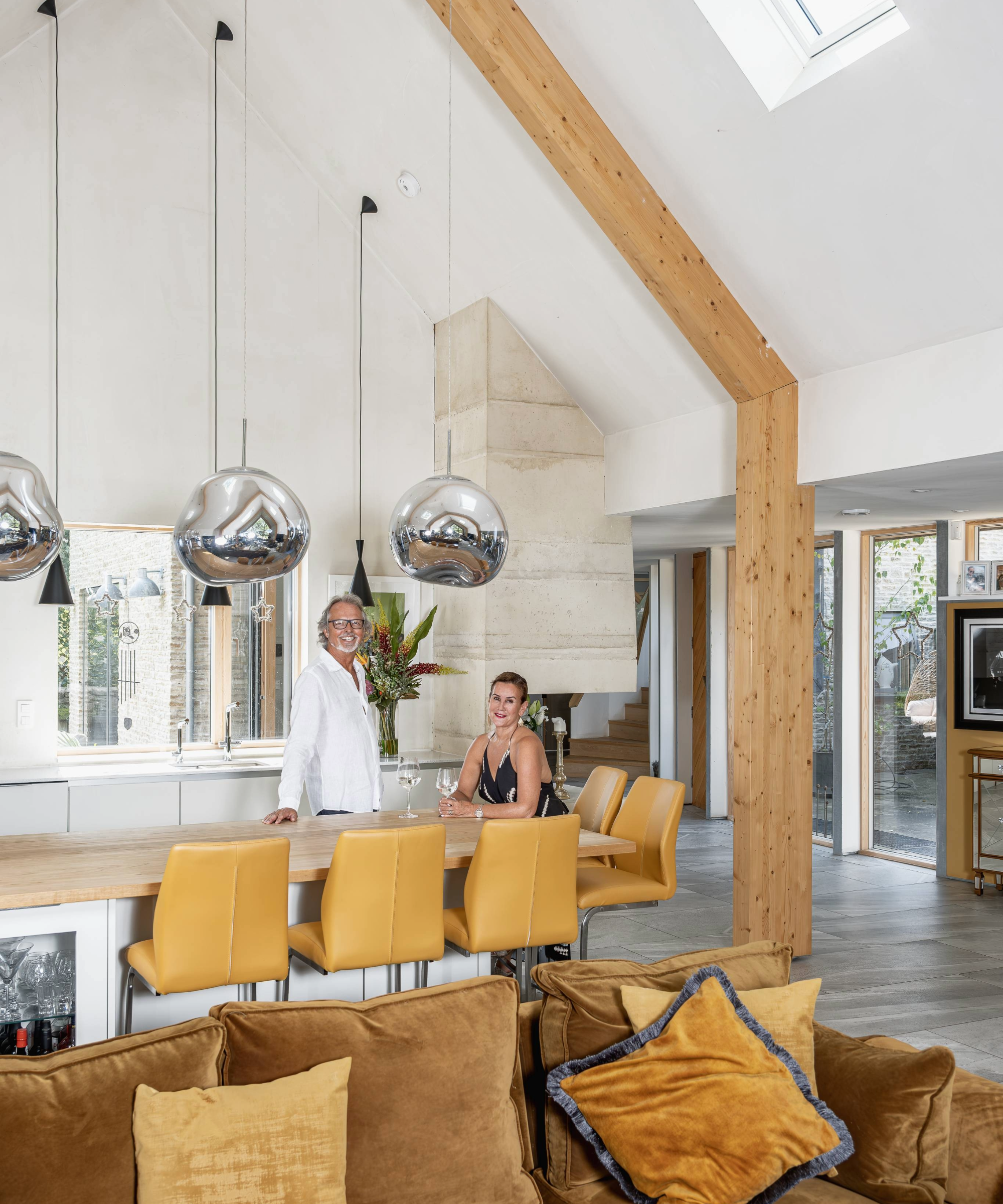
Navigating limited access
One big challenge during the project was the plot's location at the end of an exceptionally narrow no-through road. During construction, large loads had to be transferred onto smaller vehicles and deliveries were made more frequently because of limited storage. "All that cost me an extra £7,000," says Chris.
When it came to managing the budget, he chose to divide his outlay into fixed costs, provisional costs and options, to give himself some room to manoeuvre on small changes throughout the build. Chris describes his approach to the project in general as being "enthusiastic but laid back". Nonetheless, he was engaged with the build throughout, looking at layouts, adding scale-sized furniture to the plans and choosing finishes.
While Chris had a clear vision for structure and materials, his wife Natalie brought the soul. Her interior design not only softened and elevated the interior but made each space deeply liveable.
"I wanted every room to feel calm, intentional, and genuinely ours," she explains. "This is a place that holds us, not just houses us."
Chris has enjoyed both the experience of self-building and living in the completed home. The vaulted living area with those enormous windows overlooking the garden is known by all as the 'boathouse', and it is where Chris tends to spend most of his time when he's at home.
"This is my favourite space, I like the way the glazed doors open up into the garden, he says. I love opening the doors to the garden and watching the light change throughout the day. But even more than that, I love the fact that this is a home that was built from partnership – one person laying the foundations, and the other shaping the life within. We say it all the time, 'Chris built the house - and Natalie made it our home.'"
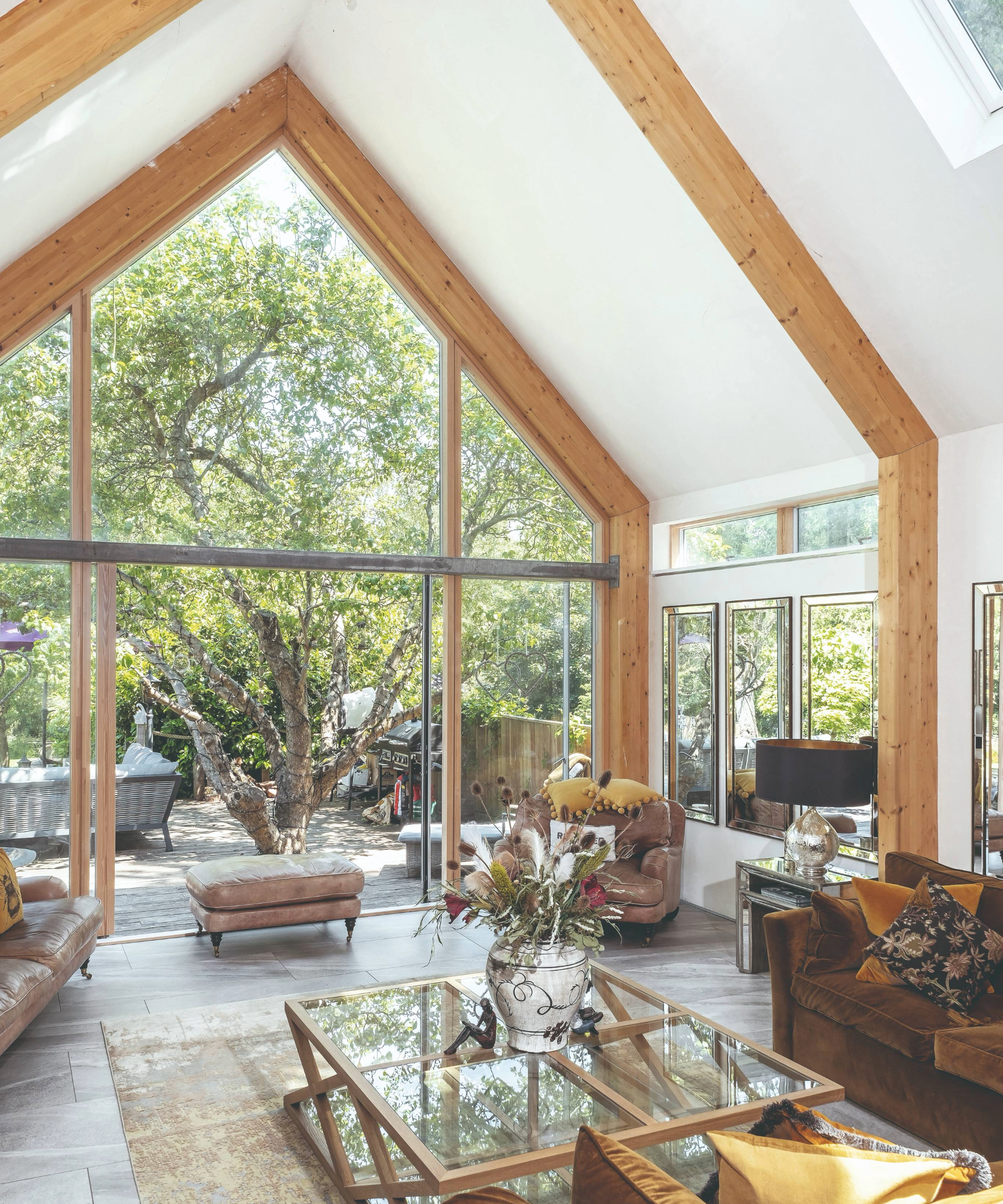
The windows are all double glazed and this glazed gable required steel as support to the large panes in the arch
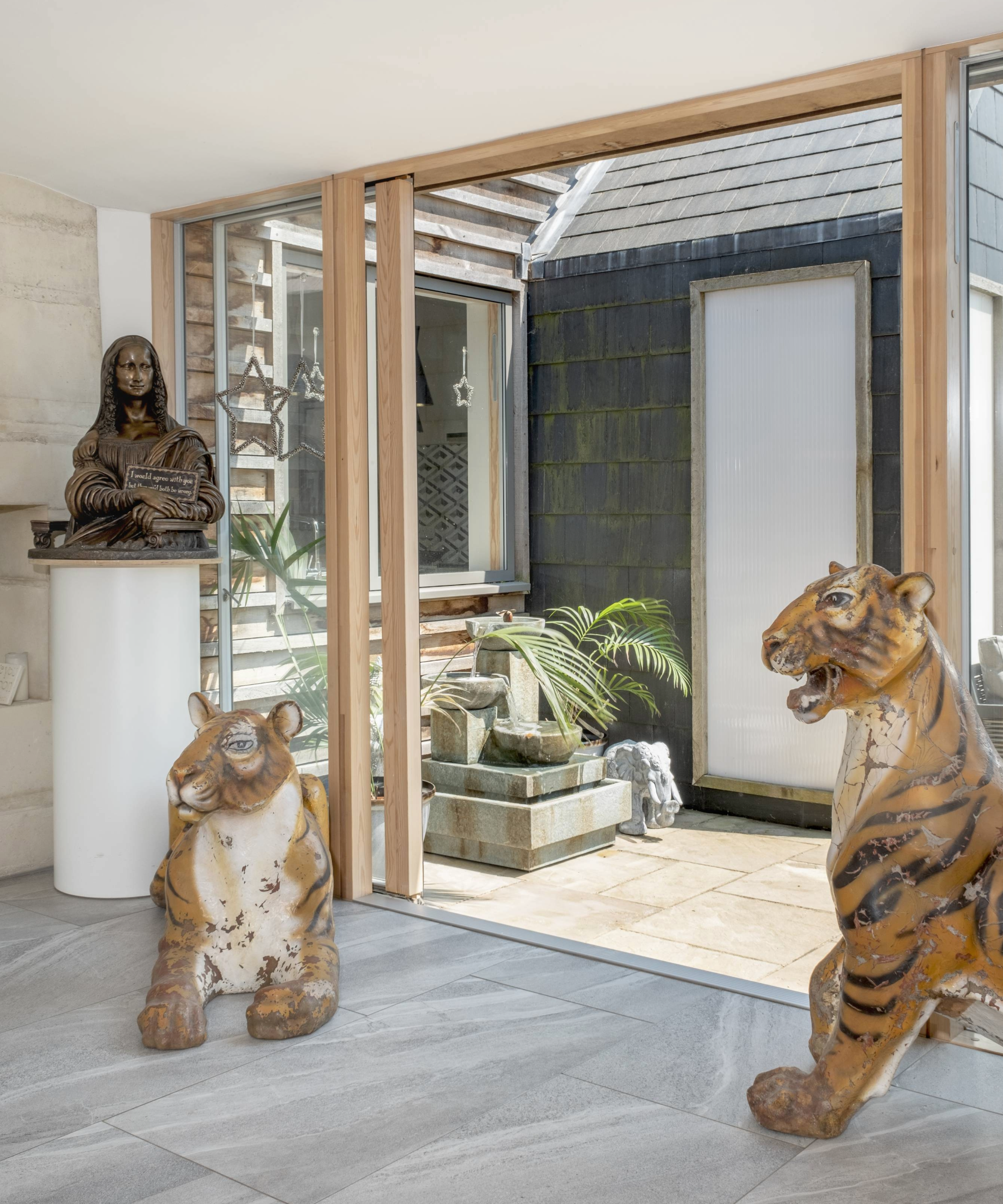
The dining area enjoys a direct connection to the gardens
Spotlight on building on a river bank
In addition to the conservation status of the area and the difficulty of vehicular access, Chris's plot also had the particular challenge of being situated on the banks of the River Avon. Despite the charm of having a river at the end of the garden, this naturally came with a heightened flood risk, meaning that Chris had to take several steps to mitigate the likelihood of his new project ending up underwater during extreme weather.
The first of these steps was to address the ground levels of the garden. The house is situated at the end of the plot furthest from the river, creating a long garden space between the two. Chris created a lower tier of garden close to the water, which is potential flood storage.
Guidance by the Environment Agency also requires that the house is set at a level 40% above the 1 in 100-year flood risk level, plus 300mm. This was a change to previous guidance and had to be incorporated into Rob's plans during the design process.
Apart from flooding, the risk posed by building close to the water also needed to be addressed. An attractive deck leads from the end of the house to the water, but rather than use concrete within the flood plain to create foundations, Chris opted for metal screw piles. These were dug by hand, to minimise risk to the established roots of trees in the garden.
Finally, with the permission of the Environment Agency, Chris was able to turn his proximity to the water to his advantage, by installing a water source heat pump to warm his home (via underfloor heating). As water transfers heat better than air, it's a far more efficient system than an air or ground source heat pump.
"My best build decision was to jump into bed with a great architect and embark on the design and build journey together," says Chris. "This meant that shapes and spaces were tweaked as the project progressed, thereby maximising the end result. We didn't have a long contract, just a simple A4 letter of engagement."
For more inspiration, take a tour of this charming Grade II-listed property in Cambridgeshire, made energy-efficient by its owners. Or, if you're looking for a more modern feel, check out the sea views from this contemporary three-storey bungalow in Cornwall.

Alexandra Pratt is a home journalist with over 20 years experience, who has written for a number of self build titles. She has interviewed countless architects and self builders.
She is also a serial renovator and has been overhauling properties for over 15 years, and has built her way up the property ladder by undertaking DIY, living on site and project managing her own renovation and self build projects.
